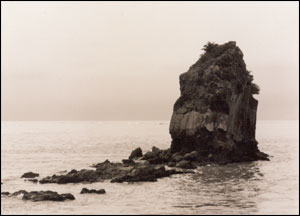 Rapanui stands vigilantly at the entrance to the Ōpāwaho/Ōtākaro (Heathcote/Avon) estuary.
Rapanui stands vigilantly at the entrance to the Ōpāwaho/Ōtākaro (Heathcote/Avon) estuary.
This distinctive rock, known as Rapanui since Waitaha times, is one of the oldest landmarks of Te Wai Pounamu (South Island).
Rapanui means the great sternpost
. It marked the way into the estuary, a guiding stone indicating the vast wetlands beyond that in pre-pākehā days extended across the present site of Christchurch as far as the shores of Waihora.
This area was once rich in shellfish, flatfish and birdlife and was a famous source of eels, waterfowl, and various types of harakeke.
Rapanui after the earthquakes
The February 2011 earthquake epicentre was shallow and very close to Sumner and had a significant impact on this well-known landmark.
Geologically referred to as a “sea stack”, Shag Rock is a volcanic remnant of coastal erosion processes that have been underway for a long time. However, the earthquake has sped up this process and as a result the rock stack is now only half its former size.
Although much reduced in size Rapanui continues to stand now as a rock pile at the entrance to the Avon-Heathcote estuary and all the lands that lie beyond.
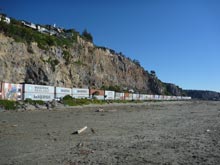

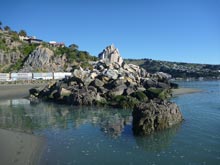
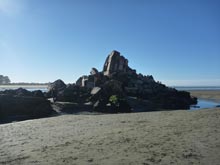
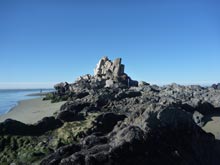
Sources
- Harry Evison and Mark Adams. Land of Memories: a contemporary view of places of historical significance in the South Island, Tandem Press, Auckland, NZ, 1993
- Rapanui Rock, Wikipedia, viewed 21 May 2014
